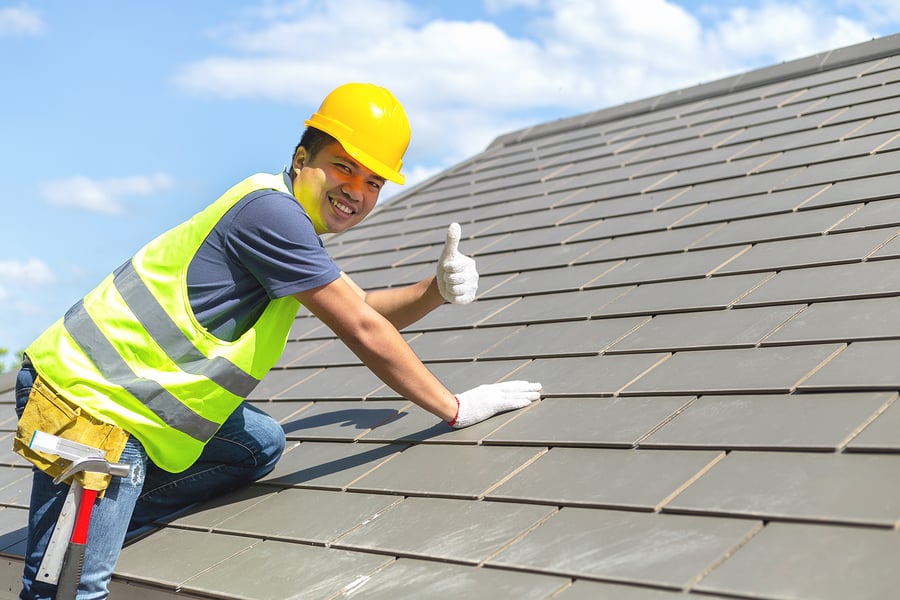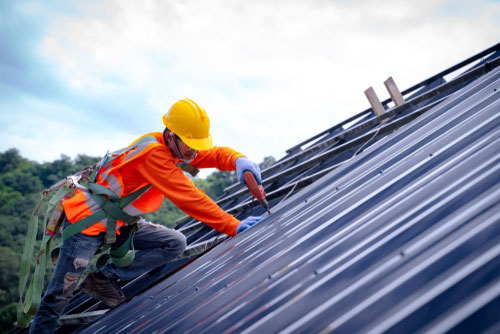Get top-quality materials and craftsmanship from a licensed Toledo Roofer.
Get top-quality materials and craftsmanship from a licensed Toledo Roofer.
Blog Article
Exactly How to Examine Different Roof Choices for Your Structure Demands
Examining roof options for your building requires a detailed method that considers various aspects such as the intended use the structure, regional climate problems, and product characteristics. It is necessary to evaluate the advantages and downsides of various roof types, from asphalt shingles to metal and clay tiles, while additionally considering first prices and long-lasting upkeep. In addition, comprehending energy performance and visual allure can influence your choice. As you ponder these factors to consider, one inquiry continues to be: which variables will ultimately assist your option for a sustainable and aesthetically pleasing roof remedy?
Assessing Your Structure's Requirements
To properly review roofing alternatives, start by thoroughly assessing your structure's demands. Start by taking into consideration the building's intended usage, as different structures might require varying roofing requirements. Property roofing systems often prioritize appearances and insulation, while commercial structures might concentrate on toughness and load-bearing capability.
Following, review the neighborhood climate conditions that will impact roofing performance. Factors such as temperature fluctuations, rainfall degrees, and wind patterns can influence material choice and layout. A roofing system that masters a pleasant environment may not do as well in areas vulnerable to hefty snowfall or severe heat.
In addition, assess the architectural integrity of your structure. Make certain that the existing framework can sustain the selected roofing products, especially if taking into consideration much heavier choices. It is also important to assess any type of local building ordinance or policies that may determine specific requirements for roof.

Comparing Roof Products
Once an extensive evaluation of your building's demands has actually been completed, the next action entails comparing numerous roofing products. Each product offers unique benefits and disadvantages, making it necessary to align your choice with your specific requirements and circumstances.
Asphalt tiles are extensively acknowledged for their cost and ease of setup, making them a popular alternative for household buildings. On the other hand, metal roofing, known for its longevity and durability, can withstand harsh weather condition conditions but might come with a greater preliminary financial investment.
Clay and concrete ceramic tiles give superb thermal insulation and aesthetic appeal, especially for Mediterranean-style style, yet they need a more robust architectural support due to their weight. Timber shakes deal an all-natural appearance and great insulation residential or commercial properties but might demand extra upkeep and are vulnerable to fire hazards.
Assessing Cost and Spending Plan
Examining your roofing options requires a mindful examination of price and spending plan factors to consider. The overall allocate a roofing project makes up numerous elements, consisting of material costs, labor expenditures, maintenance, and potential lasting financial savings. It is necessary to develop a clear budget prior to discovering specific roof covering materials, as this will certainly assist the decision-making process and aid you avoid overspending.
Begin by acquiring quotes from several contractors to recognize labor expenses in your area. Make sure that these estimates you can try these out include all needed services, such as removal of the old roofing system, installment, and any extra features, like insulation or ventilation enhancements - Roofer. Next, assess the cost of various roof covering materials, considering both first installation costs and anticipated life expectancy

Understanding Power Performance
Energy performance plays a vital role in the selection of roofing products and systems, significantly affecting both power intake and general comfort within a structure. An appropriate roofing system can improve thermal efficiency, reducing the need for heating and cooling systems, which subsequently decreases power bills and reduces environmental influence.
When evaluating roofing alternatives, think about products that mirror instead than soak up heat. In addition, appropriate insulation and ventilation are crucial to maximize the power effectiveness of the entire roof system.
An additional crucial factor is the roof's long life and maintenance demands. Resilient materials that require less constant substitute contribute to long-term power savings. The energy performance of a roof system can likewise be evaluated via its compliance with well-known sustainability rankings such as ENERGY CELEBRITY or LEED.
Thinking About Visual Allure
A roof covering's aesthetic allure substantially influences the general appearance of a structure, complementing its architectural style and improving aesthetic charm. Roofer. When evaluating roofing choices, it is important imp source to consider just how the chosen material, shade, and style will integrate with the existing structure and community. A properly designed roof covering can elevate even the easiest of structures, transforming them right into aesthetic prime focus
Different roof products offer different visual qualities. As an example, typical shingles might stimulate a classic appeal, while steel roof covering can present a modern, sleek look. In addition, the shade of the roof covering product plays a critical duty; lighter shades can make a building appear even more sizable, while darker tones may create a cozier ambiance.
Moreover, architectural elements, such as dormers and eaves, can boost the roof's aesthetic impact. It is recommended to speak with expert designers or designers to guarantee the selected roof covering alternative straightens with the overall layout intent. Inevitably, a roof should not just offer useful advantages however likewise add positively to the structure's aesthetic, reflecting the proprietor's taste and the character of the surrounding environment.
Verdict

Report this page